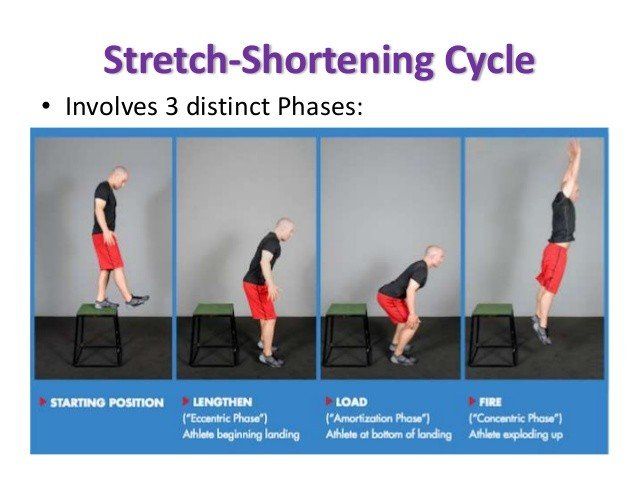ISOMETRIC TRAINING
STRETCH SHORTENING CYCLE Pt. 1
Over the next few weeks I am going to go over the stretch shortening cycle, which is what takes place when every dynamic movement occurs. There are three phases to this that I will review that all play their own important role in our muscles ability to produce force. The first portion I am going to go over is the isometric phase, which is also known as the amortization phase. This phase takes place after an eccentric muscle action takes place and before a concentric muscle action occurs.
ISOMETRICS
The isometric phase is the portion of dynamic movement where no change in muscle length takes place. This means an isometric muscle contraction is when the tension developed within the muscle is equal to external load imposed on the muscle.
UTILIZING ISOMETRICS
Isometric contractions can be utilized in two different ways. The first and most common type takes place regularly by providing stability to all dynamic movement. An example of this is your erectors contracting as you walk to keep your torso upright.
Isometric muscle actions are also used during the stretch shortening cycle for the purpose of rapidly transferring energy from an eccentric to concentric muscular action. This portion of a dynamic movement is short, so it is very important that it is in sync and as efficient as possible. If this process is not efficient, energy will be lost and less power will be produced. Also, for any concentric movement to take place a ramp-up of isometric force must take place to overcome the external load prior to dynamic movement happening.
TYPES OF ISOMETRIC CONTRACTIONS
There are two different types of isometrics, they are yielding isometrics and overcoming isometrics.
A yielding isometric contraction occurs in an attempt to hold a position against an external load. These contractions are typically sub-maximal and take place when an athlete is fighting against an eccentric contraction for a period of time. An example of this would be performing a back squat with a pause at the bottom. The major goal of a yielding isometric is to maintain posture and resist external forces.
An overcoming isometric contraction occurs when force is developed by an individual to overcome an external force. These contractions take place at near maximal magnitude, much higher intensities than yielding isometrics. They result in no motion because the individual is pushing or pulling against an immoveable object, but the exercise must be completed with the intent of movement taking place. An example of this would be performing a bench press with an empty bar into power rack J-Cups. The major goal of overcoming isometrics is to rapidly build tension and to produce maximal levels of force.
ISOMETRICS PERFORMED AT DIFFERENT MUSCLE LENGTHS
A factor you can manipulate when utilizing isometric training is varying the point in the movement that you perform the isometric. There are two different ways you can approach this.
When performing isometrics, if your goal is to increase overall strength of the particular movement, it is best to perform the pause when the muscle is in a lengthened position. An example of this would be performing a pause at the bottom position of a squat or bench press (while still keeping tension on the muscle). This will transfer to strength at all other angles of the particular joints range of motion.
The other option is to perform the isometric at the weak/sticking point in the particular movement to strengthen that portion of the lift. An example of this would be performing a pause in the upper portion of the bench press if you struggle to lock the bar out, but have no trouble driving it off your chest. Another would be performing an isometric during the squat when you are at parallel if you struggle with finishing hip extension. This type of isometrics will only transfer to strength in the particular range of motion trained, so choose wisely.
SOURCE:
Isometrics for Performance
Matt VanDyke & Max Schmarzo






